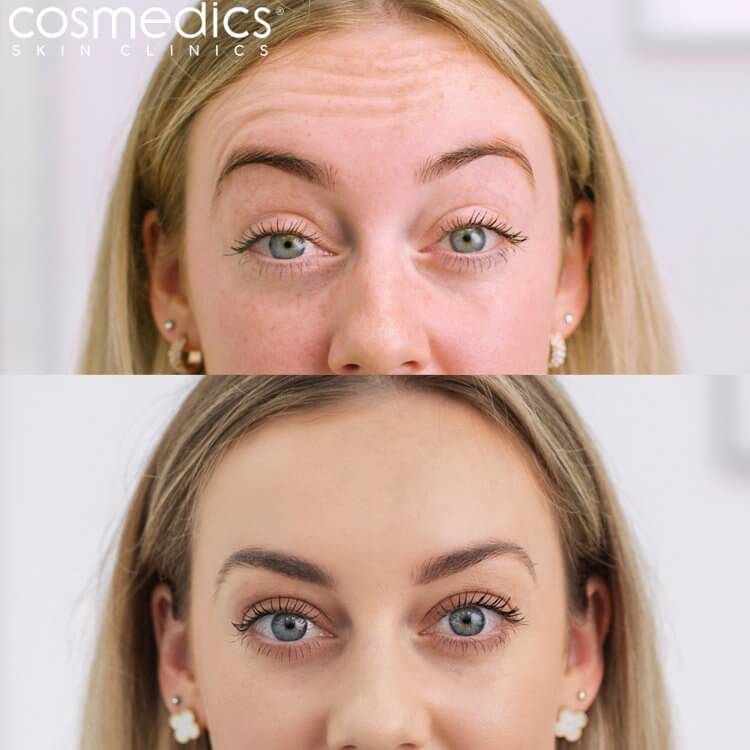In the management of Central Serous Chorioretinopathy (CSC), advanced imaging technologies play an essential role in diagnosing the condition, monitoring its progression, and assessing the effectiveness of treatments. Over the past decade, technological advancements have significantly improved our ability to visualize the retina and choroidal structures in unprecedented detail, leading to earlier detection and more personalized treatment approaches.
Optical coherence tomography (OCT) is a cornerstone of CSC diagnosis and monitoring. This non-invasive imaging technique provides high-resolution cross-sectional images of the retina, enabling clinicians to observe fluid accumulation beneath the retina, retinal thickness, and the integrity of retinal layers. OCT is crucial for diagnosing CSC, particularly in cases where symptoms may be subtle or patients have mild visual disturbances. It is also useful for assessing the response to treatment and detecting any recurrence of fluid beneath the retina.
Enhanced depth imaging (EDI) OCT is a specialized form of OCT that allows for better visualization of the choroid, the layer of blood vessels beneath the retina that is typically involved in CSC. This technology is particularly helpful for identifying choroidal thickening and hyperpermeability, which are common features of CSC. By detecting these changes early, EDI OCT can help clinicians make more informed decisions about treatment plans and anticipate potential complications.
Another valuable imaging technique is fluorescein angiography (FA), which involves injecting a dye into the bloodstream to visualize the blood vessels in the retina. This test can identify areas of leakage and provide additional insight into the severity of the condition. However, while FA remains important in diagnosing CSC, its use has decreased with the rise of OCT, which is safer and more comfortable for patients. Nonetheless, FA may still be used in certain cases, particularly when more detailed information about the retinal vasculature is needed.
Indocyanine green angiography (ICGA) is another advanced imaging technique that is sometimes employed in CSC diagnosis. Unlike FA, which highlights the retinal vasculature, ICGA focuses on the choroidal circulation, which is directly involved in CSC. ICGA is especially useful in cases of chronic or recurrent CSC, where there may be persistent leakage or abnormal choroidal blood flow. By providing a more comprehensive view of the choroid, ICGA can aid in the assessment of the disease’s progression and the need for additional treatments.
The integration of these advanced imaging techniques into routine clinical practice is transforming the way CSC is managed. They not only improve the accuracy of diagnosis but also enable clinicians to track subtle changes in the retina and choroid over time. This allows for earlier interventions and more effective treatment plans, ultimately leading to better outcomes for patients.
The Psychological and Emotional Impact of CSC: Addressing Mental Health Concerns
Beyond the physical implications of Central Serous Chorioretinopathy (CSC), the psychological and emotional toll the disease takes on patients is an often-overlooked aspect of care. Chronic conditions like CSC, which can lead to fluctuating vision and uncertainty about future visual outcomes, can cause significant distress. Addressing these emotional concerns is an integral part of comprehensive CSC management.
Living with CSC often involves dealing with anxiety and uncertainty about the future, particularly when the disease is recurrent. Patients may experience worry about the progression of their condition, the possibility of permanent vision loss, or the need for frequent treatments. These concerns can result in heightened stress levels, which, as mentioned earlier, can also trigger or worsen CSC flare-ups. Chronic stress is known to negatively affect both physical and mental health, leading to a vicious cycle that worsens both the disease and its emotional impact.
Depression is another common mental health challenge faced by CSC patients. Those who experience vision impairment or the prospect of future visual decline may struggle with feelings of helplessness or sadness. Social isolation, decreased quality of life, and difficulty performing daily activities due to visual disturbances can further contribute to feelings of despair. This makes mental health care an essential component of CSC treatment.
Psychological support through counseling or therapy can help patients navigate these emotional challenges. Cognitive-behavioral therapy (CBT), a type of psychotherapy that focuses on identifying and changing negative thought patterns, has been shown to be effective in treating anxiety and depression. CBT can help CSC patients develop coping strategies, reframe their fears about vision loss, and improve their mental resilience.
Support groups, either in-person or online, provide a space for patients to connect with others who are going through similar experiences. Sharing stories and coping strategies can foster a sense of community and reduce feelings of isolation. Peer support has been shown to enhance emotional well-being, improve self-efficacy, and reduce stress.
Furthermore, some patients may benefit from relaxation techniques and mindfulness practices. Techniques such as deep breathing, progressive muscle relaxation, and guided meditation can help manage stress and promote a sense of calm. Mindfulness, in particular, can help individuals stay present and avoid excessive worrying about the future.
For patients with severe psychological distress, such as those struggling with suicidal ideation or overwhelming anxiety, referral to a psychiatrist or other mental health professional may be necessary. Medications, such as antidepressants or anti-anxiety medications, can also play a role in helping to stabilize mood and alleviate symptoms.
By integrating psychological care into the treatment plan for CSC patients, healthcare providers can address the full scope of the disease’s impact. This holistic approach improves not only the patient’s mental well-being but also their ability to manage the physical aspects of the disease effectively.
The Promise of Artificial Intelligence in CSC Diagnosis and Treatment
As technology continues to advance, the role of artificial intelligence (AI) in healthcare is becoming increasingly significant, including in the field of ophthalmology. AI holds tremendous potential for revolutionizing the diagnosis, monitoring, and treatment of Central Serous Chorioretinopathy (CSC), offering new possibilities for more accurate, efficient, and personalized care.
One of the primary ways AI is being integrated into CSC management is through the analysis of retinal imaging. Deep learning algorithms, a subset of AI, are capable of analyzing large datasets of retinal images, such as those produced by OCT, fluorescein angiography, and ICGA. These algorithms can detect subtle signs of CSC, even in the early stages, that might be overlooked by the human eye. By analyzing changes in retinal thickness, fluid accumulation, and choroidal blood flow, AI can assist clinicians in diagnosing CSC more accurately and at an earlier stage, which can ultimately lead to better treatment outcomes.
AI-powered systems also have the potential to improve the efficiency of monitoring CSC patients over time. Instead of relying solely on manual review of retinal images, AI algorithms can automatically detect changes and flag any areas of concern. This reduces the time required for analysis and allows for quicker decision-making, which is especially important for preventing recurrence or progression of the disease. AI may also assist in identifying patterns in patients’ medical histories, lifestyle factors, and treatment responses, helping clinicians tailor individualized treatment plans.
In addition to diagnostic and monitoring applications, AI is being explored for use in predicting the outcomes of various CSC treatments. By analyzing data from large groups of patients, AI can identify which therapies are most likely to be effective for specific individuals, based on factors such as age, gender, disease severity, and treatment history. This personalized approach could lead to better treatment decisions and more efficient use of resources.
Furthermore, AI-driven decision support tools could coroidite sierosa centrale help guide clinicians in selecting the most appropriate treatment options for their patients. For example, AI might recommend specific drug regimens or adjustments to dosing based on the patient’s unique characteristics. It could also predict the likelihood of treatment success, helping patients and healthcare providers make informed decisions.
While AI is still in the early stages of implementation in CSC care, its potential to improve outcomes is clear. As AI systems continue to evolve and gain more experience, they are expected to play an increasingly important role in the management of CSC, enabling more precise, efficient, and personalized care.
The Integration of Complementary Therapies in CSC Treatment
In addition to conventional medical treatments, some patients may explore complementary therapies as part of their Central Serous Chorioretinopathy (CSC) management. While these therapies should always be discussed with a healthcare provider, there is growing interest in how certain alternative approaches may help support overall eye health and well-being in CSC patients.
One complementary therapy that has shown promise in some studies is acupuncture. Acupuncture, a traditional Chinese medicine technique, involves inserting thin needles into specific points on the body to stimulate energy flow and promote healing. Some studies have suggested that acupuncture may help reduce inflammation, improve circulation, and promote retinal health, which could be beneficial for CSC patients. However, more research is needed to establish its efficacy and safety for CSC treatment specifically.
Herbal supplements are another complementary approach that some CSC patients explore. Certain herbs, such as ginkgo biloba and bilberry, are believed to have antioxidant and anti-inflammatory properties that could benefit retinal health. However, it is essential to approach herbal remedies with caution, as they can interact with medications or cause unwanted side effects. Patients should always consult with their ophthalmologist or healthcare provider before using any herbal supplements.
Additionally, some patients turn to mind-body therapies, such as yoga and Tai Chi, to help manage stress and improve overall health. These practices emphasize breathing techniques, relaxation, and gentle movement, all of which can promote stress reduction and improve mental clarity. Since stress is a known trigger for CSC flare-ups, incorporating relaxation practices into a treatment plan could help reduce the frequency of episodes.
Finally, dietary supplements, such as omega-3 fatty acids, vitamin C, and zinc, may offer additional support for eye health. Omega-3s, in particular, are known for their anti-inflammatory properties and have been shown to benefit retinal health. However, patients should ensure they are taking the right dosage and not relying solely on supplements to manage their condition.
Ultimately, complementary therapies may offer CSC patients an opportunity to enhance their overall well-being, but they should never replace conventional medical treatments. Instead, they should be integrated into a comprehensive care plan under the guidance of a healthcare professional. When used appropriately, these therapies may help patients feel more empowered in managing their condition and improving their quality of life.…



























